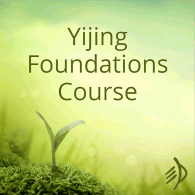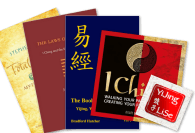Steve Marshall has updated his ‘ruling lines’ page with many more examples than before. It’s worth taking the time really to look at them all.
A question he doesn’t answer (Steve?) is what difference it makes when one of the changing lines you receive is a ruler. I find that with governing rulers, there may be a tacit message, ‘You have more influence in this situation than you imagine.’ But I am sure there’s a lot more to it than that…









Good question, I’ll probably add a bit on that.
I think when you receive a governing ruler as a changing line it tends to confirm that you are in the dao of the hexagram and you will find it easier to act according to the oracle since you already are. Which fits in with what you say too.
(Note I have just changed server, so I think that could mean that some people may still get the old page, depending on whether the DNS information has propagated their way as yet. Just check my ‘What’s new?’ page to be sure you have the updated site.)
Just in case the commentarie could be useful
1.- A helpful picture. If you think the hexagram is a little comunity, ruling line is like the one person that have the principal influence in the Time that comunity is living. He is the motor of the action. As its name says, that line have the mandate on the movement of the entire hexagram
2.- There are 2 kind of reading about a ruling line: a) if the ruling line is setting in his proper place (always 2 o 5 line); b) if the ruling line is “in movement” (in thes case, there are 3 kinds of ruling lines: Constitutional, Governamental and Absolute)
3.- Constitutional is a soft mandate or a transitional mandate; Governamental is a strong mandate; and Absolute is a unique&strong mandate
4.- If there is a Changing Line, ruling line lose its relevance; because the changing line has the mandate
5.- If the Changing Line is a ruling line, its movement is more easy or dangerous (if the omen is venture, the movement would be easier; if the omen is danger or fault, the movement woulde be most dangerous)
6.- If there is no Changing Line, the ruling lines have the mandate, and the Subject must obey the objective movement of the Sign. This means, in every hexagram, there are 2 posible kind of movements: those belonging to personal choices (when there are active lines, reflexing both subjective and objective situation) and those belonging only to the objective situation (when the hexagram is unchanging)
Best wishes
The latest updates by Steve Marshall will prove an interesting read for earnest students and may trigger deeper thoughts on the ancients and Yi studies than most readers will realize. Anyway, have fun.
Well, one has not paid much attention to ruling lines in the past and probably will not until it is proven that they really work in divination. Perhaps what Steve wrote about understanding the ruling lines to develop “an intuitive sense of the interplay of the lines†would be more meaningful to Yi studies.
The interplay of lines can be important to an accurate interpretation of the oracle. A few examples can be seen in Sam Crane’s blog, “The Useless Tree†in his recent entries on the Friday I Ching. As his divinations were very accurate, one could then afford to ‘play’ with the lines relationship on a few occasions to interpret the oracles on matters of state relating to the US.
Reading the latest updates in Yijing Dao the other day, led to these words, “Turning back moves to the Dao†(under the section on Daoist wuwei or ‘not doing’ and Dao, ‘the Way’) which jumped up at me. One got so used to the translation by Legge and never saw the significance of Chapter 40 TTC until reading what Steve said about its first verse. A reason why reading the Yijing Dao’s website is worthwhile for Yi and Daoist students.
To Yi students ‘Return’ (turning back) conveys a special meaning of its own. By studying the Yi we are also learning Dao (Da Chuan / The Great Treatise). To Eastern Daoists, learning how to return to the Dao is of utmost importance. Through the short verses in Chapter 40 Laozi provides yet another subtle guide to what the inner alchemy (neidan) practitioner has to do. The interesting chapter is definitely worth a mention in a later entry.
In the Yi, the judgment of Hexagram 24 Fu says: “Return. Success. Going out and coming in without error. Friends come without blame. To and fro goes the way. On the seventh day comes return. It furthers one to have somewhere to go.†Reading part of the commentary may give rise to a better understanding: “After a time of decay comes the turning point. The powerful light that has been banished returns. There is movement, but it is not brought about by force. The upper trigram Kun is characterized by devotion; thus the movement is natural, arising spontaneously.†[W/B]
Return is the root and stem of character. This is one of the hexagrams where we learn how to cultivate proper conduct of a Junzi and to build character. In forum discussions on this hexagram, one often points out that it is a return to the Light. For essence and life is contained in the light of Heaven. Therefore it is important for students to understand the significance of Return and its deeper implications if we want to progress much in Yi studies. Rereading the judgment and commentary, perhaps Laozi had hexagram ‘Fu’ in mind when he wrote down TTC 40.
Extracts on the entry on TTC 40 Return to Tao
hello, how does hexagram 24 pertain to relationships? if your partner has gone away does this mean they will be returning?
thanks
maria
You might think it would, but in my experience – not usually, no. It more often has to do with getting back on your own path and following that where it leads. Then you meet the right people, who are walking the same way.